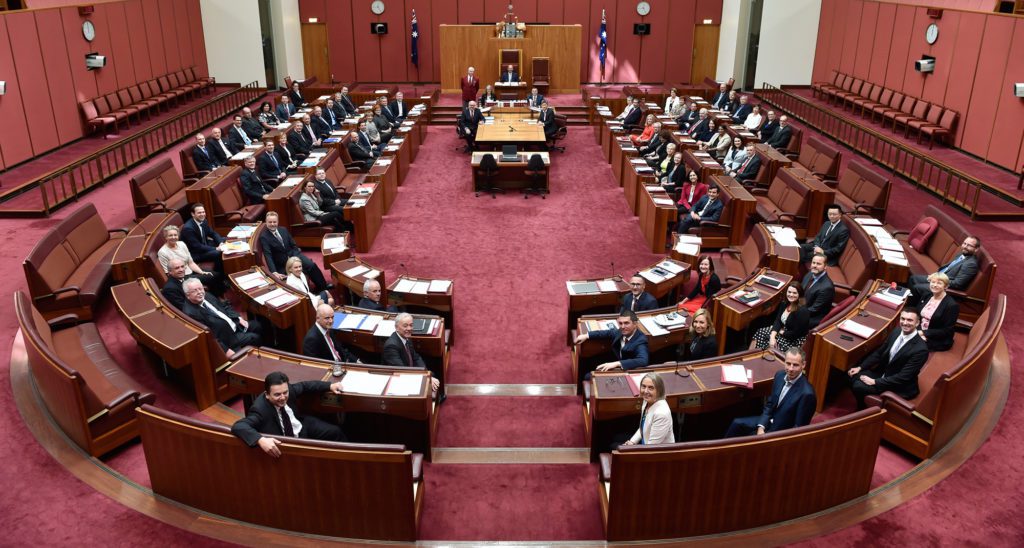ABOVE: In the senate at Parliament House. Photo: Contributed
Michael Burlace
Politicians have a lot of power to do good or bad things and so our political system has checks and balances to keep them under voter control.
Part of that is having two houses of parliament with different voting systems for each house to allow a broader representation of ideas and groups in parliament.
Each house is meant to keep an eye on the other and stop anyone misbehaving.
That’s the theory – and if we elect a good bunch we get a good result.
If we do not choose wisely, we get too much of the antics we have seen lately, here and in Britain and America.
Another part of our voting system is the aim to elect the people most preferred by as many voters as possible. This is through preferential voting in the lower house and proportional voting in the upper house.
Preferential voting for the House of Representatives has generally had more benefits for the major parties.
And to balance that, the proportional vote tallying method in a senate election can deliver a benefit for smaller parties and some high-profile independents.
Because each of the NSW senators is elected by all of the voters in the state, it’s like having multiple members from a single electorate instead of just one. So the voting system has to be different to get the “best” candidates elected.
The reason we have a tablecloth-like ballot paper is because of the number of candidates who aim to get elected using that benefit.
It can be hard to get elected as the local member, but getting elected as a senator can be easier if you have a strong profile.
The large number of candidates is a reflection of our healthy democratic process and is fairly easy to handle once you know who best reflects your interest.
Senators normally serve for six years – this is twice as long as for members of the Lower House to reduce the impact of strong short-term political swings.
At most federal elections, all members of the House of Representative and half the senators are made to apply for their jobs again.
Occasionally there is a double dissolution – both houses of parliament are cleared out and all of them have to face their public.
This election includes a half-Senate election and that means half of our senators will face the voters.
Six NSW senate spots will be decided over the next few weeks – it takes a long time to go through the complex procedures involved in ensuring a fair senate count.
Like everything else in our electoral system, there are checks, cross-checks, scrutineers and avenues for escalating any issues to a person who can resolve them. And then there are the recounts and the courts.
Following the Trumpist model of being a sore loser, there have been more claims of fraud already this time in Australia and you can guarantee there will be more after the election.
But fraud is extremely rare in Australian elections. Like microscopic.
How it’s counted
The Senate voting has a quota. To become a senator, a candidate must get a quota of votes.
The formula for the quota is one vote more than the number of formal votes divided by the number of candidates plus one.
Formal votes are those that are numbered correctly.
There will be more than five million formal votes cast for the six NSW senate spots in this election.
But let’s take a simpler example where exactly one million formal votes are cast.
The number of formal votes is divided by the number of senators to be elected plus one.
We have to elect six senators this time and so we divide by 6+1 and that is 7.
Dividing one million by seven comes to 142,857.1 and that number is rounded down to 142,857.
Then one vote is added to it to give 142,858 and that is the quota.
Once a candidate gets that many votes, they are elected and any excess votes can spill to other members of their group.
